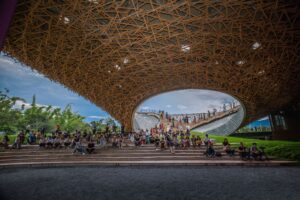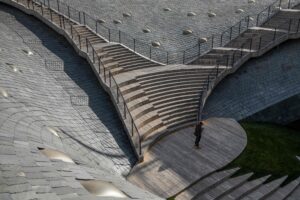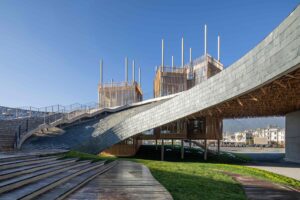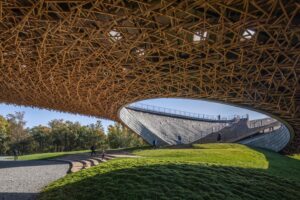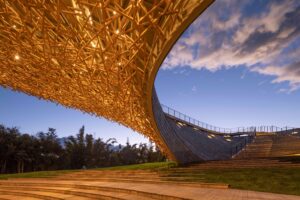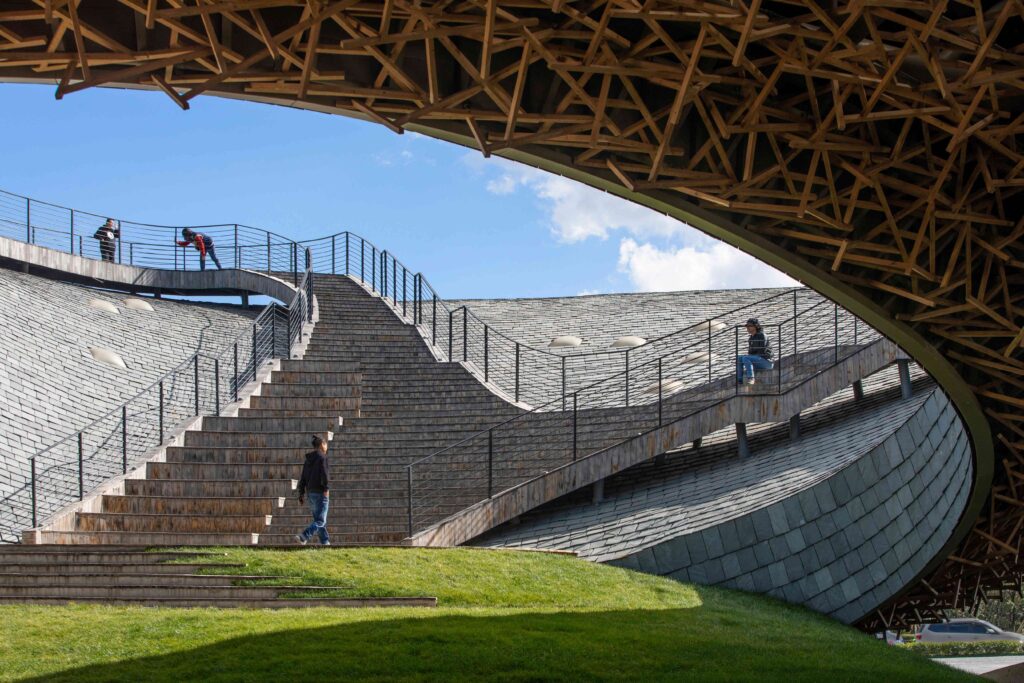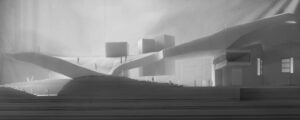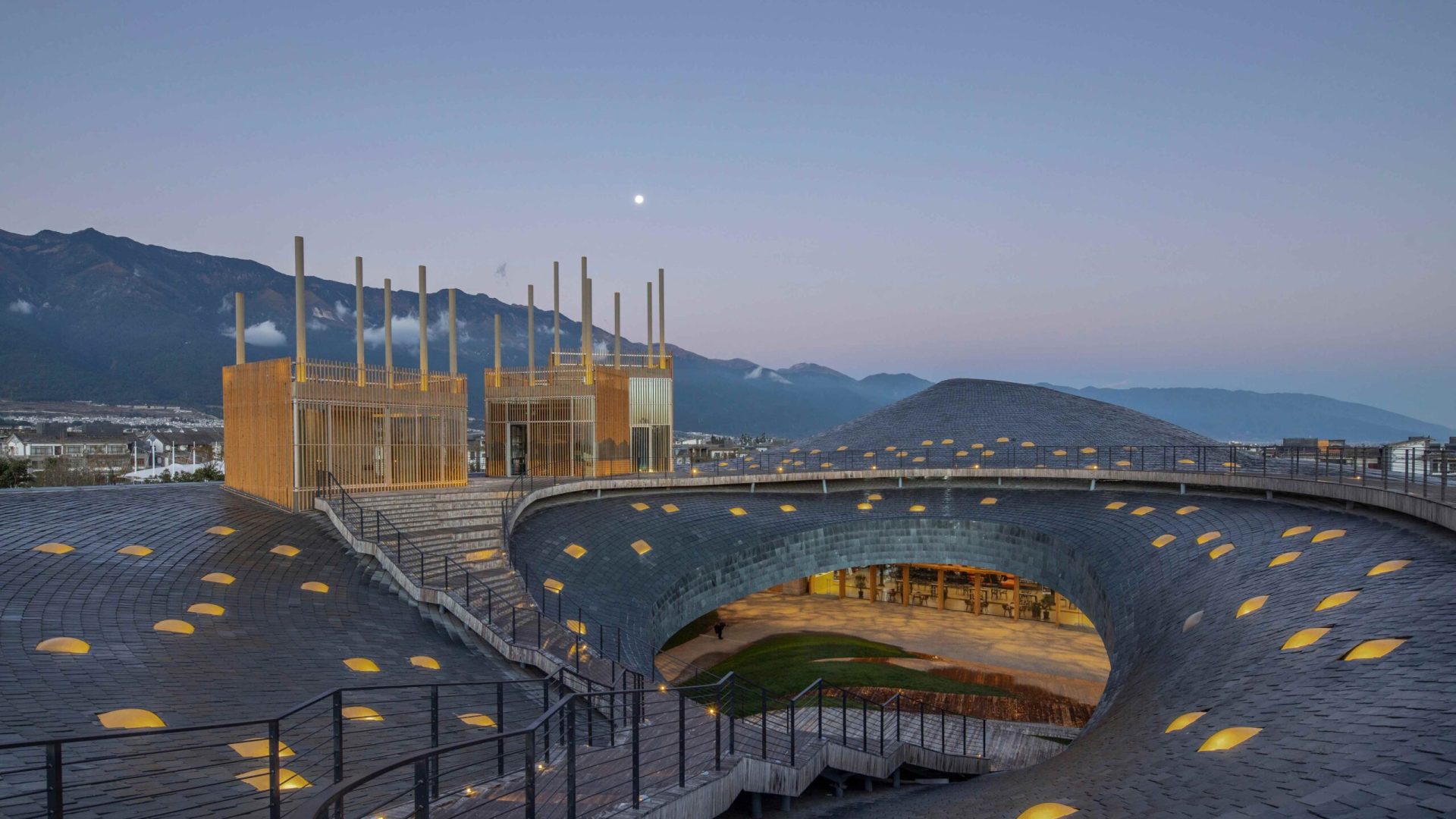
The Landscape-Inspired Geometry of the Yang Liping Performing Arts Center
The Yang Liping Performing Arts Center, located in the city of Dali, in China, is a project that has been recently completed (2020) by the Beijing-based Studio Zhu Pei. The performance centre sits in the northeastern historic area of the city, not far from the ancient walls and the gate towers of Dali.
The Arts Center was commissioned by dancer Yang Liping, an important figure in the art scene because of her focus on the artistic traditions of local minorities such as the Bai ethnic group. The Arts Center is a versatile and multifunctional space that serves as a theatre and amphitheatre, it includes a multipurpose hall, a café, a shop and an office space.
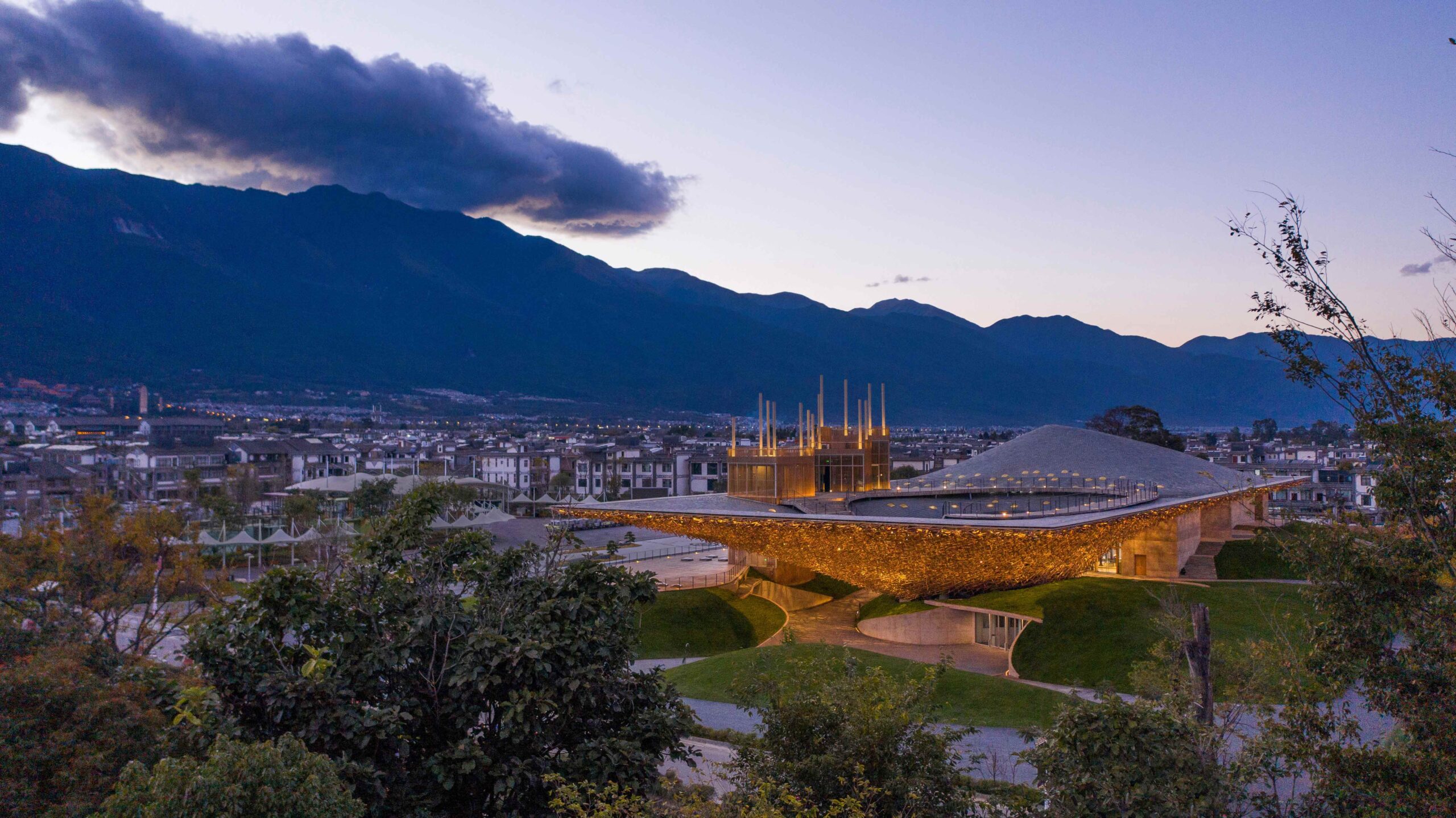
In order to accommodate these functions, the building uses a partially open structure that allows for indoor and outdoor space to blend together. The roof is a wide curved cantilever structure covering a system of spaces that can be flexibly combined, opened and closed to accommodate various performance needs.
The Yang Liping centre structure folds towards the ground to merge with partially sunken green plazas that blur the line between roof, walls and ground. The playful design also creates a suggestive environment through the use of different finishings for the roof and ceiling of the porous structure: respectively slate shingles for the outside, reminding an earthy landscape, and timber battens for the underside, which let sunlight come in and create games of light and shadows. The roof becomes also a space for people to find shade and shelter from the rain while remaining permeable to the outside.
A concrete volume containing the main theatre merges with the open plaza creating a versatile and adaptable space that can be opened up to the outside. Just off this area, a majestic set of wide steps going all the way to the roof height can be used as a seating area for outdoor performances or just for casual seating by the visitors.
On the right-hand side of the staircase, a group of three treehouse-like towers intersects the folding structure, creating a connection between the ground floor and the top of the Arts Centre, allowing visitors to admire the great view of the city landscape; in fact, The Yang Liping centre is a space for people to enjoy the view of the city as much as to attend arts events. One of these towers contains the cafe/teahouse/restaurant.
Hidden underneath the artificial landscape of sunken plazas and green mounds a basement has been designed for rehearsals and service functions. The curvy elegant forms of the roof structure and the elements of the performance centre invite people to come in and wander around, navigating between interior-exterior, ground-roof and architecture-nature.

The inspiration for this project comes from the landscape of the city of Dali itself; situated near the Cangshan mountain and the Lake Erhai, the Yang Liping Arts Center uses its sinuous shape to mimic the movements of the valley meeting the ground, creating a parallel between earth and sky.
The performance centre also takes inspiration from the local people lifestyle represented by the habit of wandering outside and spending time doing outdoor activities which led to the idea of blurring the line between interior and exterior and creating a building with a strong sense of landscaping.
According to Zhu Pei the Chinese Yin Yang theory of two parts coming together to form a whole also played an important role in the design of the arts centre: the outdoor staircase becomes one with the indoor theatre once the sliding door is open, resulting in a large open plaza underneath the roof and blurring the boundaries between landscape and stage.
Landscapes merging with architecture is a significant concept for Zhu Pei, a concept recalling one of his exhibitions named “Mind Landscapes” at the Aedes Architecture Gallery in Germany: the illustration of the architect’s personal research about buildings being able to become regional landscapes.

Zhu Pei is an architect who has often tried to employ nature as an inspiration and extension of architecture, using it in its favour rather than working against it. The office was founded in 2005 and it quickly became one of the leading firms for cultural projects. The contextualization in nature, but also the history and culture of a locale, are key for Zhu Pei’s office, exploring the way architecture can be an extension of a specific natural space and its culture while supporting innovation in architecture.
Zhu Pei is also involved academically being dean of the Central Academy of Fine Arts, School of Architecture, he is a visiting professor at Harvard University and Columbia University. He received the Honorary Fellowship of the American Institute of Architects and he is a RIBA charted architect.
The Yang Liping Arts Center is an innovative space for creativity, that is able to translate the territory and culture of a city into architecture. Through the disruption of the typical theatre space: a completely enclosed and soundproof space, Zhu Pei favours the model of the ancient Greek amphitheatre, where nature becomes the backdrop for the theatre and the performance, challenging people’s view of what an art space should look like.

